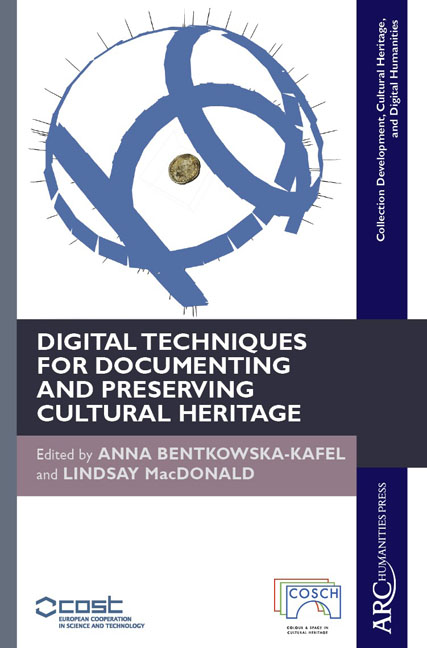3D Depth Sensing
Published online by Cambridge University Press: 26 January 2021
Summary
Definition
Three-dimensional depth sensing can be defined as the ability or capability to tell the distances from a reference point, or observer, to all objects in a 3D scene. In technological terms, it requires a system able to take measurements, or employ computational methods, or a combination of those, to estimate distances from the system itself to all objects in its surroundings. In cultural heritage applications 3D depth sensing is at the heart of most 3D digitization systems (in some cases termed 3D optical documentation). Several restrictions apply, including the proper handling of valuable and fragile historic objects.
Description
Technically, 3D depth sensing is the process of acquiring the distances of all points in a 3D scene from a fixed point of reference, which in most cases is the sensing device itself. There are a number of different methods and technologies for sensing the depth in 3D space. Usually these methods are categorized into light-dependent and light-independent: a light-dependent system senses light, in any way, in order to assess the three spatial dimensions, whereas light-independent employs methods not directly sensing light, but using geometrical and topographical principles. In addition, mainly within the category of light-dependent methods, a further sub-classification is based on the principle used or the technology being applied. These are the active and passive methods: active in a sense that the measuring system formulates the conditions of the measurements in order to acquire depth, whereas passive methods rely purely on computation applied to raw “unsupervised” measurements.
Numerous methods can be found in the literature, and here is a list of the most cited in their category:
1 Light-dependent methods
a Active methods
i Laser triangulation
ii Time-of-flight scanning (or LiDAR, LADAR, range scanning)
iii Structured-light scanning
iv Shape from Photometry
v Shape from Shading
vi Shape from Shadow
vii Tomography (of any kind)
viii Holography
b Passive methods
i Photogrammetry
ii Structure from Motion
iii Shape from Silhouette
iv Shape from Stereo
v Shape from Texture
vi Shape from Focus (zooming)
vii Microscopy (of any kind)
2 Light-independent methods
a Topographic methods
b Empirical methods
c Contact sensing methods.
- Type
- Chapter
- Information
- Publisher: Amsterdam University PressPrint publication year: 2018



